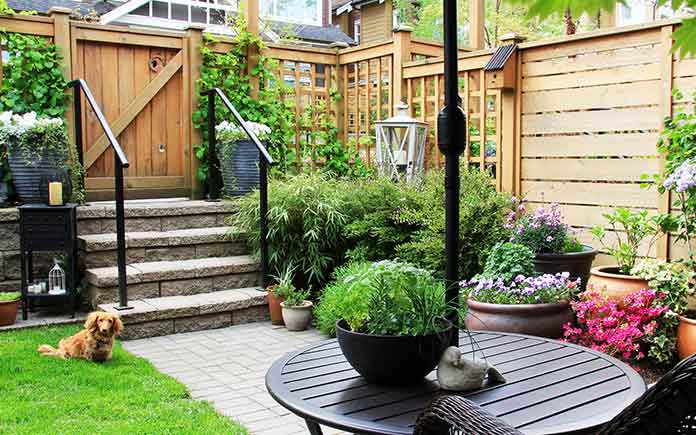
When it comes to climate change and the state of our planet, all actions matter. Each one of us can do something to reduce our carbon footprint — starting with something as simple as garden design.
If you have even the smallest garden and you love spending time there and caring for it, you can start introducing changes.
Step by step, you can transform your backyard into a sustainable garden that will benefit you and our planet. Best of all? You can do it without losing any of its beauty or charm.
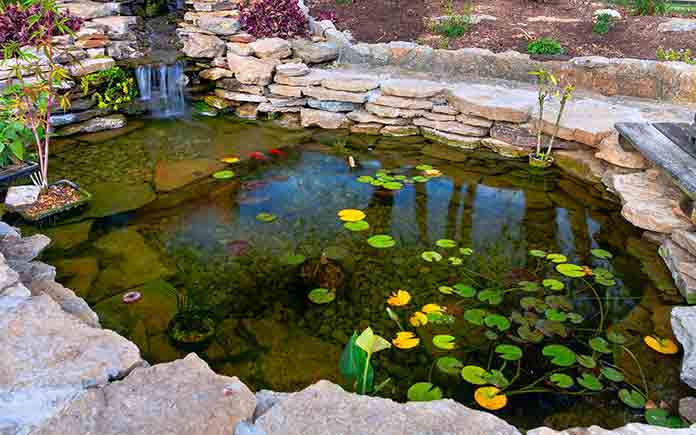
1. Make Your Pond Eco-Friendly
A well-designed pond can be a garden’s focal point, but it brings multiple benefits other than looks.
It can help you create a whole, healthy ecosystem in your backyard and provide you and your family a place to relax.
However, you need to consider several things to make sure that it’s environmentally-friendly and easy to maintain.
A pond needs to be deep enough if you want to fill it with living organisms such as beautiful Koi fish. The deepest portion of a reservoir — one that’s at least 3 to 5 feet — won’t get hot during warmer months or freeze in the winter, so fish will be safer.
Also, research the right combination of plants that will be most beneficial to your pond. Some will provide fish with food and oxygen, while others will shelter them from the sun, or attract useful insects.
Then, even if you have filtering plants, you will need to think about the aeration system to keep your pond clean and healthy.
Big or small pond fountains can contribute significantly to your overall garden design, and help you maintain the right level of oxygenation.
Finally, to make sure you’re doing right by the environment, consider solar-powered pumps and filters.
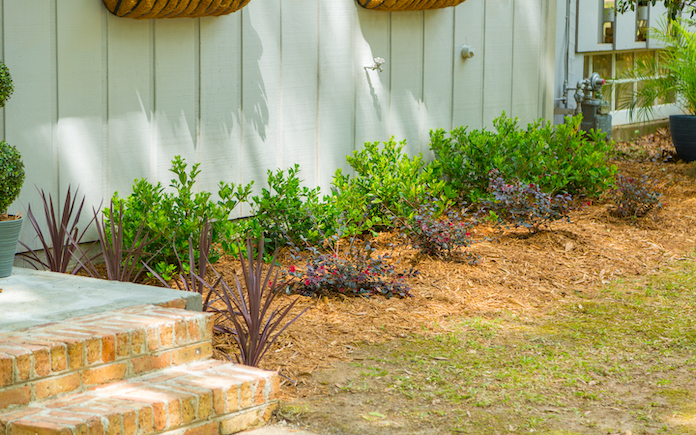
2. Plan Your Garden Well
Plan for a garden, not a gardener, is a well-known rule in landscape design.
The best way to keep a sustainable garden that will also be easy to maintain is to work with what you’ve got. In other words, use only plants that are native to your area and carefully plan the design.
For example, make sure you know which kinds of plants you will grow. The shadow-loving ones should be planted in the shadow, or in the shade of taller plants, not in direct sunlight. Plants that need more water have to be placed in a moist area, perhaps next to a pond.
Proper planning will reduce the amount of needed maintenance, but it will also allow your garden to thrive and impress.
Having plants native to your climate will contribute to preserving native wildlife as well — you will provide food and shelter to those insects and birds that are already there and need it.
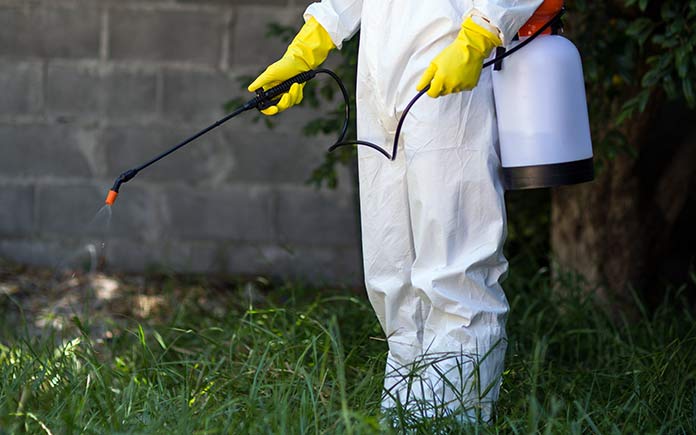
3. Say No to Chemicals
You don’t need to use harmful chemicals to get rid of pests, as there are more natural insecticides.
For example, ladybugs, ground beetles, and many more are very much wanted in any garden. They prey on plant-eating insects, and they are completely safe to be around people and pets. And who wouldn’t like to have cute, charming ladybugs in their garden?
There are many tricks just waiting for you to discover them. For example, onions and chives planted around roses may prevent them from getting black spot disease, bird feeders will attract birds that feed on caterpillars, and horseradish near potatoes will protect them from diseases.
Also, research native plants. A lot of beautiful flowers won’t just enhance your garden’s design; they’re also useful when it comes to pest control and providing your garden with all the necessary nutrients.
If you need some exercise (we all do), consider pulling out weeds by yourself. It will help you stay in shape and eliminate the need for using chemicals to get rid of unwanted weeds.
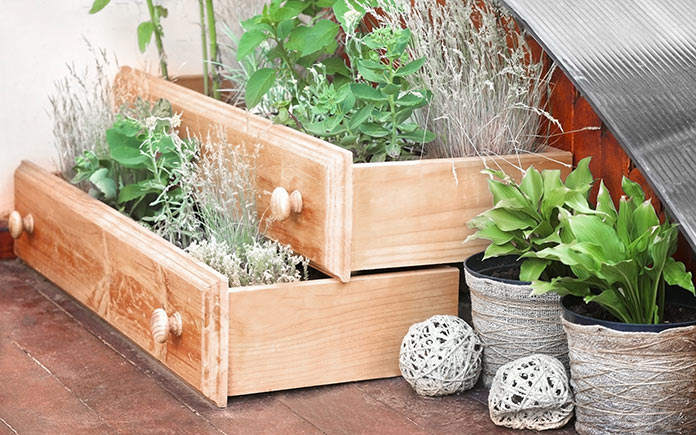
4. Look for Eco-Friendly or Recycled Materials
Despite what you may think, working with eco-friendly materials will not limit your possibilities and choices.
On the contrary, by choosing to work with recycled, green and local materials, you will activate your creativity and imagination, and you just may find your style.
Tin buckets, old clay pipes, and ridiculously cheap garden chairs are waiting for you to put them to use and enhance your garden’s design.
Sometimes, all you need is a little bit of paint to enjoy something new and fashionable from an old, scruffy item. Visit yard sales and junk shops to find the garden table of your dreams or a seesaw that you’ve always wanted for your children.
You can also find new things made from recycled materials; one example is a set of furniture made from recycled plastic that can look just like wood.
Also, if you decide to buy only local materials, you will reduce your carbon footprint by not contributing to the pollution generated by export.

5. Grow Your Own Food
Growing your own fruits, vegetables and herbs will help you discover a variety of new flavors. Home-grown food always tastes better because it’s grown with love and care, and without chemicals.
You will enrich yours and your family’s diet with healthy ingredients and save some money on groceries. In addition, a wide range of colorful fruits and vegetables can add to the attractiveness of your garden and enhance its rustic design.
Take Care and You Will Be Taken Care Of
By creating a sustainable garden, you will not only contribute to protecting our planet, but it will also benefit you and your family. After all, a sustainable garden is a healthy and safe one.
Be kind to Mother Nature and she will certainly pay you back by providing you with her healthy fruits and natural beauty.
Natalia Kołkowska is a freelance writer.



